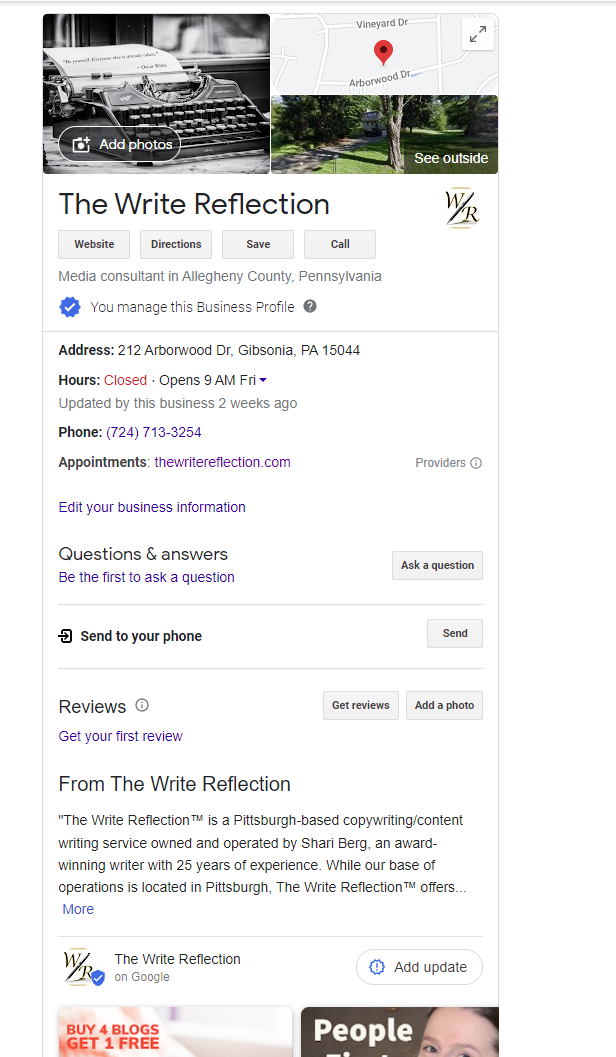|
There’s an ugly side to local search engine optimization through Google My Business (GMB). A major flaw in how GMB accounts work can compromise a brand’s reputation. Most organizations aren’t aware of the issue until it affects them. By then, it’s a complicated mess to resolve (if you’re lucky enough to settle the matter at all). So, what’s this 5-alarm fire raging over on the Google My Business platform? Well, did you know that anyone can create a GMB account for your business, even if they don’t work there or have any affiliation with it? Worse yet, that same person can then run the account, posting anything they’d like about your brand. Scary, innit? If this is news to you, then brace yourselves for the ugly truth. In this blog, we delve into this potential nightmare and offer tips on what to do if your organization becomes an unwitting victim. What is Google My Business?Google My Business is a free tool provided by search engine giant Google. It allows businesses to manage their online presence through Google, which includes how prospective customers find them through another popular Google service called Google Maps. By creating and verifying a business listing, you can update your information—address, hours of operation, phone number, website—and post other information like updates and photos. Customers can review your products or services and you can respond to those reviews. Google My Business guarantees your brand gets found during a Google search when industry-relevant keywords are used for your products or services. The GMB listing appears in the top right of the search engine page, helping your organization become front and center for searchers. Why do organizations need a Google My Business account?Brick-and-mortar businesses and other organizations that want to boost their local visibility on search engines rely on Google My Business to get found online. At least, that’s the trick if someone is using Google to search for a product or service your company provides. Rival search engines like Bing and Yahoo don’t bring up GMB accounts (imagine that!). Some of the benefits of creating and managing a GMB account for your brand include:
Who can create a Google My Business account for your brand?Before you can get the full benefits of a GMB account, you must either create one or take control of one already created by another person. Herein lies the rub. You might go through the steps to create an account, only to find out someone has already established one for your business. This recently happened with two of The Write Reflection’s clients. Navigating through this unfortunate situation felt like being trapped in the 9th circle of hell from Dante’s Inferno. If you’re lucky, it was one of Google’s bots that created the listing. Sometimes they do that because they think they’re being helpful little AIs. They come across your website or social media while crawling the web and discovering your information. A quick scan shows you don’t already have a GMB listing, so they create one for you. That’s the best-case scenario because it’s easier to claim the listing and control it. You’ll know if this is the case if you see a “Claim This Business” option on the GMB account. However, sometimes a direct competitor or disgruntled former employee or customer can create a GMB listing in your business’s name. When that happens, buckle up because you’re in for a bumpy ride. Navigating the 9th circle of GMB hellWhat can you do if you discover someone created a GMB listing for your business and Google denies you access to it? Contacting Google Help directly is highly recommended. You must speak to a real person at Google. Otherwise, you’ll find yourself banging your head off your desk in frustration. Here are two scenarios The Write Reflection’s clients recently encountered with GMB and how we resolved the issue. Scenario #1: Someone has created a listing in your name.Let’s take the worst-case scenario. A former employee who involuntarily left your company decides the best way to get some sweet revenge is to create a GMB listing and populate it with disinformation. To make matters worse, they convince a few of their friends to get onto the listing and create horrible reviews of your products or services. When Joe Schmo starts typing in an industry-relevant keyword for your brand, the GMB listing is the first thing they see. It doesn’t exactly leave a glowing impression of your business, so they keep scrolling until they find a competitor instead. This was the case for one of our clients who depends on local SEO to find new customers for his business. The GMB listing came up, but it was filled with incorrect information. So, searchers moved on to one of the three other businesses in the area that provide the same services. Our client was hemorrhaging new leads and needed to stop the bleeding. The solution We first tried to request access and verify our client as the authorized representative for the account. Google had us jump through several hoops in the name of verification, and finally granted us access. However, the victory was short-lived, because within a few minutes of authorizing our control, Google suspended the GMB listing without further explanation. As a final resort, we contacted Google Help directly. A detailed explanation of the situation, plus providing information that proved our client was the legitimate owner of the business, finally did the trick. Google reversed its suspension and handed over full control. Problem solved. Scenario #2: Someone has hijacked control of your account.Sorry to be the bearer of bad news, but there’s something even worse than having an unaffiliated person create a GMB listing in your business’s name. It’s possible to hijack a GMB account simply by asking Google for permission, and then hoping the authorized person doesn’t intervene in time to cancel the request. All someone must do is go to an existing GMB listing and request Google add them as an authorized manager. There’s a handy feature to make this super easy, which only encourages nefarious actors to engage in this kind of behavior. Once you request access, Google sends an email to the GMB account manager on record. Here’s where it can go downhill quickly. You only have 3 days to respond to that email to refute the request for access. If you don’t see the email in time, Google assumes your non-response is an A-OK sign and hands over the keys to the kingdom. The solution We had a local business come to us for assistance in this situation. The first thing we did was request access. However, the hijacker made sure they denied our request, so Google wouldn’t let us in. Because the information posted to the account was potentially damaging to our client’s reputation, we reached out to Google directly and explained the situation. Once again, we jumped through hoops to verify our client was the legitimate owner of the business. Google removed the other individual from the account and authorized our access. What are some other hidden issues with Google My Business?Unauthorized access to your account is just one issue you can experience with Google My Business. Failing to keep your GMB listing updated can prevent customers from finding your brick-and-mortar location or reaching out to you. If you have a phone number, address, or website change, it’s critical to update that information on your GMB listing immediately. Consumers get frustrated quickly when they can’t find you to do business with you. They’ll simply move on to a competitor who cares enough to keep their online information accurate. Another potential landmine is negative reviews and low ratings. Sometimes competitors and former employees get onto GMB listings and cause problems by leaving negative feedback. Failure to monitor and respond to this issue can harm your brand’s reputation. AuthorShari Berg has known she wanted to be a writer since she was old enough to hold a pencil in her hand. She believes everyone has a story to tell, and it’s her job to discover it. Shari owns The Write Reflection, a Pittsburgh-based copywriting and content writing company that empowers small business owners to wield the power of words.
0 Comments
Your comment will be posted after it is approved.
Leave a Reply. |
Categories
All
Archives
April 2024
|





